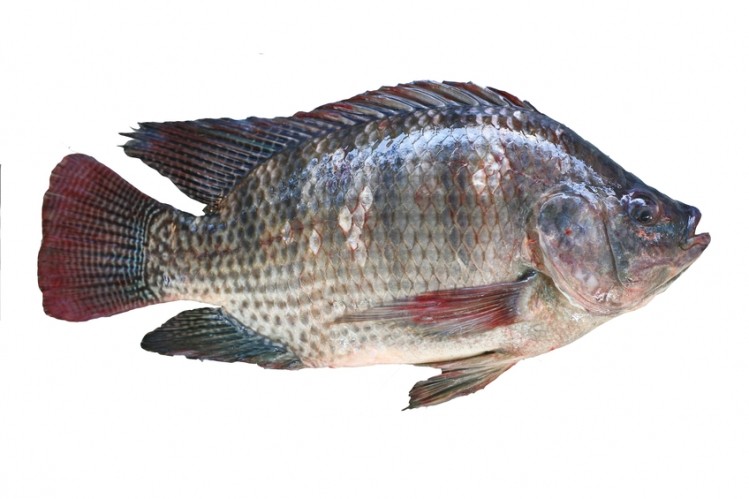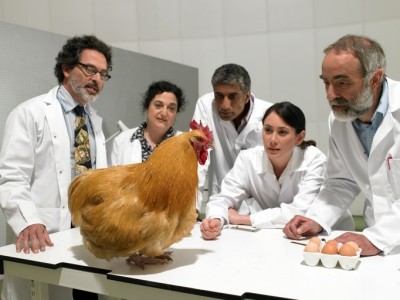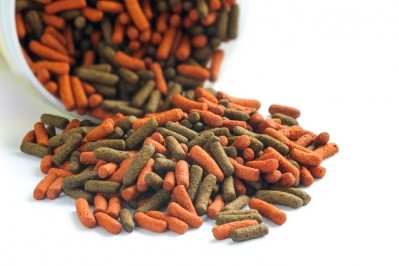Low-cost enzymes may offer digestion boost to tilapia

A team of researchers at the University Estadual Paulista in Brazil examined the use of 'low cost' fungal phytases and proteases generated from agro-industrial co-products on nutrient availability of plant-based diets for Nile tilapia.
The group published its work in the journal Aquaculture.
“The aim of this study was to determine the effect of supplemental low-cost homemade fungal phytase and protease on protein, energy and mineral availability by juvenile Nile-tilapia fed plant based protein diets,” the researchers said.
The group found that enzyme use improved nutrient digestibility when soybean meal was included in the diet as a plant-based protein.
“The substrate, as well as, the microorganism species can affect the biochemical character of the enzyme produced,” the researchers said. “Additionally, both microbial enzymes demonstrated to be efficient for increasing nutritional utilization of soybean meal for Nile tilapia; and more, these low cost enzymes are alternative additives to improve soybean meal digestibility for a cost-effective and environmentally friendly fish diet.”
Enzyme use
Intensifying fish production calls for better production technologies and feeding systems that are low cost and low in pollution, wrote the authors. Use of animal proteins can bring a high cost so there has been interest in using plant-based proteins, they noted.
Ingredients like soymeal offer availability, and have a good amino acid profile, they said. However, plant proteins may include anti-nutritional factors that reduce availability of nutrients and minerals, said the researchers.
“Phytic acid is the major anti-nutritional factor, which is the phosphorous storage compound in most plant protein sources,” they said. “Most phosphorus bound to phytate (P-IP6) is excreted by fish into the water due to its low availability, this can make phosphorus less available for fish utilization on its metabolism.”
The molecule also binds to elements of proteins, amino acids and some proteases, they added.
Phytases are a class of phosphatases, and a main one used in animal nutrition is produced from Escherichia coli (E. coli), the researchers said. It has been previously demonstrated that adding phytase to a diet with plant-based ingredients boost phosphorous availability and nutrient use.
“It has been also suggested that a number of factors such as pH, nature of the protein source and the presence of digestive proteases may determine the effect of phytase on protein and minerals bioavailability within fish digestive tract,” they said.
However, more research is needed to understand the mechanism involved in the phytase to protein interaction and resulting availability of proteins and amino acids, they added.
Using the correct phytase has been found to have different effects on nutrient digestibility, they said.
Protease use helps protein become more accessible by a fish, said the team.
The use of proteases also may help reduce environmental pollution as the additives increase nutrient availability, said the researchers.
“Protein based food with several anti-nutritional factors and low nutritional availability are common in the animal feed industry,” they said. “High levels of proteases inhibitors are found, mainly in soybean meal, which is one of the most important protein ingredients in animal feed.”
Enzyme production, feed use
For the feeding trials, enzymes were generated using different substrates – wheat middling and soybean meal, said the researchers. Fungal samples were generated from lyophilized strains of Aspergillus niger and Aspergillus oryzae.
Phytase activity was established and protease activity also was measured, they said. Optimal temperatures for use and temperature stability were determined along with optimal pH and pH stability.
Fish were given one of nine diets, a control diet, diets with soybean meal and corn gluten, and those diets with added phytase, protease, or both feed supplements, they said. Phytase was added in a ratio of 2,000 U kg-1 and protease at 1,500 U kg-1.
Fish were fed for seven days before sample collection, said the researchers.
Fecal matter was collected and analyzed along with feedstuffs and diets, they said. Apparent digestibility coefficients were calculated along with elements of the diet and fecal matter.
Results
The study explored enzyme production and nutritional availability of plant-based diets when enzymes were present or absent, said the researchers.
“The addition of enzymes significantly affected nutrients digestibility when soybean meal was used as plant protein test ingredient,” they said. “As for corn gluten, when compared to soybean meal with enzyme utilization, showed no difference.”
There were differences in the apparent digestibility coefficient (ADC) of try matter, protein, energy and lipids when phytase was used with soybean meal, they said. Digestibility varied if phytase was added and was reduced if soybean only was added to the diet.
Phosphorous availability also was altered by adding fungal phytase, they said. And use of either phytase or protease increased use of phosphorus, magnesium, calcium and manganese in soybean meal.
“In this study, Aspergillus niger phytase showed optimum pH at 5,” the researchers said. “Also, as Nile tilapia stomach pH is acid, phytase activity increase in low pH and protein digestion occurs in the stomach; this condition may help to improve protein digestibility.”
However, there were no differences for diets with corn gluten when enzymes were added, they said.
Aspergillus oryzae performed poorly when generated using soybean bran, but A. niger generated phytases for both substrates, they said. Both phytases had different temperature stability.
Protease from A. niger had distinct behavior and proteases from A. oryzae were stable at all pH and had better yields.
Source: Aquaculture
Title: Enzymes produced by agro-industrial co-products enhance digestible values for Nile tilapia (Oreochromis niloticus): A significant animal feeding alternative
DOI: 10.1016/j.aquaculture.2017.08.010
Authors: P. Novelli, M. Barros, L. Pezzato, E. Araujo, R. Botelho, L. Fleuria












